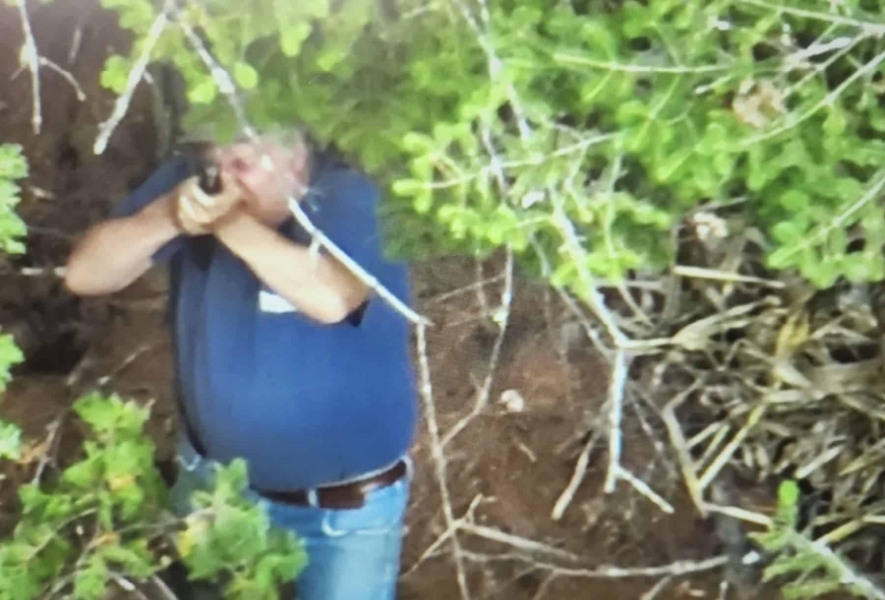Search And Rescue Drone Shot At Twice While Hunting Lost Dogs In Maine

Amazon DEALS: DJI Mini 4K now $249 (-17%) and DJI Osmo Action 4 drops to $249!
A commercial drone pilot conducting aerial searches for missing pets in northern Maine has been targeted by gunfire twice in recent weeks, with one bullet striking his aircraft—acts that constitute federal crimes carrying potential prison sentences under aviation law.
Robert Russell, owner of 2A TAC Drone Services based in Barrington, New Hampshire, was operating his thermal imaging drone over Corinth when it was hit by gunfire while searching for two missing beagles. Just weeks later, his aircraft was shot at again over Orrington, though that round missed its target. Under federal law, these attacks on Russell’s drone constitute the same criminal offense as shooting at a manned helicopter or airplane, with violators facing up to 20 years in prison.
For drone professionals, these incidents underscore both the growing risks of operating in hostile environments and the serious federal protections that apply to all aircraft—including unmanned systems.
Federal Crimes Trigger FBI Investigation
Russell, a retired military veteran and former police officer, immediately reported both incidents to authorities. The Maine State Police and FBI Boston field office have been notified, according to his Facebook post following the Corinth shooting in early September.
“The guy was firing at my drone in Orrington near Dow Road,” Russell told The Maine Wire. “Thankfully he did not hit the drone, but he was trying.” The second incident provided crucial evidence—Russell captured imagery of the alleged shooter from his drone’s camera system.
Under 18 U.S.C. § 32, destroying or damaging any aircraft in flight is a federal felony punishable by up to 20 years in prison. The law makes no distinction between manned and unmanned aircraft, meaning shooting at a drone carries the same penalties as attacking a commercial airliner.
Professional Search Operations Face Criminal Targeting
Russell operates as an FAA-licensed commercial drone pilot, using what he describes as $25,000 thermal imaging drones to locate missing pets, livestock, and people. His 2A TAC Drone Services has been conducting search and rescue operations for three years, with mission costs ranging from $700 to over $1,000 depending on complexity, travel time, and operational requirements.
“I’ve been doing this for three years,” Russell said. “It’s a very rare thing to get shot at. Now it’s happened twice in the last month.”
The veteran pilot recently demonstrated his services’ effectiveness by successfully locating “Bobo,” a dog that went missing from Brewer and was found in Orrington through a coordinated volunteer effort supported by his aerial reconnaissance capabilities.
Airspace Laws Override Property Rights in Federal Aviation System
Social media reaction to the shootings has been mixed, with some Facebook users expressing sympathy for those who shot at Russell’s drone, apparently unaware they’re endorsing federal crimes.
Russell defended his operations while educating critics about aviation law: “I am a huge proponent of privacy and property rights. But you don’t own the airspace over your property. A drone has as much right to fly over your property as a helicopter or a plane. Shooting at one is a federal offense.”
The FAA manages all airspace as a public resource. More critically, federal aviation crimes apply regardless of whose property lies below the aircraft. The pilot emphasized that his thermal search operations focus on locating missing animals and people, not conducting surveillance of private activities.
DroneXL’s Take
These Maine shootings represent a dangerous escalation that could have devastating consequences for both individual operators and the entire commercial UAV industry. What many property owners don’t realize is that taking potshots at drones isn’t just property defense—it’s a federal aviation crime carrying serious prison time.
The disconnect between public perception and federal law is alarming. Drones aren’t RC toys when operated commercially; they’re aircraft under federal jurisdiction with the same legal protections as any other aviation asset. The FBI’s involvement in Russell’s case should send a clear message that these crimes will be prosecuted to the fullest extent.
But beyond legal consequences, these attacks threaten legitimate services that save lives and reunite families with missing pets. As commercial drone operations expand into delivery, inspection, and emergency response, how do we bridge the gap between public anxiety and legal reality?
Should the FAA launch public education campaigns about aviation law? Do we need clearer penalties for drone shootings? And how many professional operators will abandon rural markets if this vigilante behavior spreads?
Share your thoughts on this escalating crisis in the comments below—and remember, federal aviation law protects every legal flight, whether manned or unmanned.
Editor’s note: The article erroneously reported that “Property owners typically control airspace only up to about 80-500 feet above ground level, depending on location and circumstances.” This has now been corrected.
